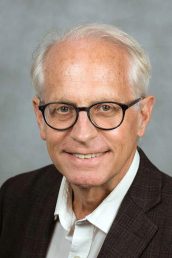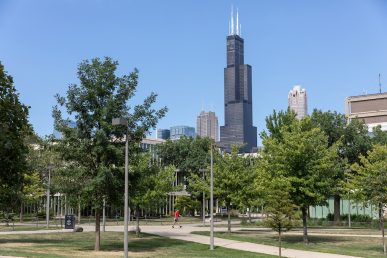UIC awarded $2.25M to establish Army HBCU/MI Research Center of Excellence
The University of Illinois Chicago has been awarded a $2.25 million, five-year grant to establish a Research Center of Excellence by the U.S. Army through a program that aims to expand and diversify its research base through partnerships with historically Black colleges and universities and minority-serving institutions, or HBCU/MI.
The award to UIC will found EXtreme EnErgy Density, or EXEED, a research center dedicated to multidisciplinary, collaborative research focused on the discovery, characterization and synthesis of next generation energetic materials.
The mission of the work based at EXEED is to create new high energy density materials, or HEDMs, from molecules subjected to extreme conditions such as high pressures and to train the next generation of scientists and engineers for the U.S. Department of Defense in the field of energetic materials.

“We are excited to launch this bold new basic science effort to discover new materials with unprecedented amounts of stored energy and other useful properties. We are also grateful to the U.S. Army Research Office for its recognition of UIC’s potential in training students from underrepresented groups in this field,” said EXEED director Russell J. Hemley, LAS Chair in the Natural Sciences and professor of physics and chemistry.
Joining Hemley in the center are Ksenija Glusac, UIC associate professor of chemistry; Tom Driver, UIC professor of chemistry; and Santanu Chaudhuri, UIC professor of civil, materials, and environmental engineering, who are experts in fast spectroscopy and photochemistry, synthetic organic chemistry and large-scale simulations, respectively.
The research group and participating students will utilize a newly established high pressure laboratory at UIC, as well as established organic synthesis, spectroscopy and synchrotron facilities at UIC, Argonne National Laboratory and Brookhaven National Laboratory.
Using these facilities, EXEED will apply state-of-the-art extreme conditions, laser optical, and synchrotron x-ray and infrared techniques to investigate and develop next generation HEDMs.
“The newly supported center has the potential to discover new classes of materials with energy and power densities exceeding significantly those of traditional explosives,” said James Parker, program manager for the U.S. Army Combat Capabilities Development Command’s Army Research Laboratory. “The combination of the personnel and facilities available at the center brings to bear world-renowned expertise as well as cutting-edge state-of-the-art instrumentation which will lead to breakthrough discoveries in how ever-increasing amounts of potential energy can be stored in solid materials, of significant importance to the Army.”
Last year, Hemley and UIC received awards for related high pressure research. In October, the Department of Defense awarded a $3 million, three-year award to establish an undergraduate research mentoring program in science, technology, engineering and mathematics, or STEM, areas with a focus on engaging undergraduate student veterans and minority students. The Department of Energy’s National Nuclear Security Administration, or NNSA, awarded $8 million over four years to UIC in April to lead a multisite, interdisciplinary center focused on research, training, and technique development in the study of materials in extreme conditions.

